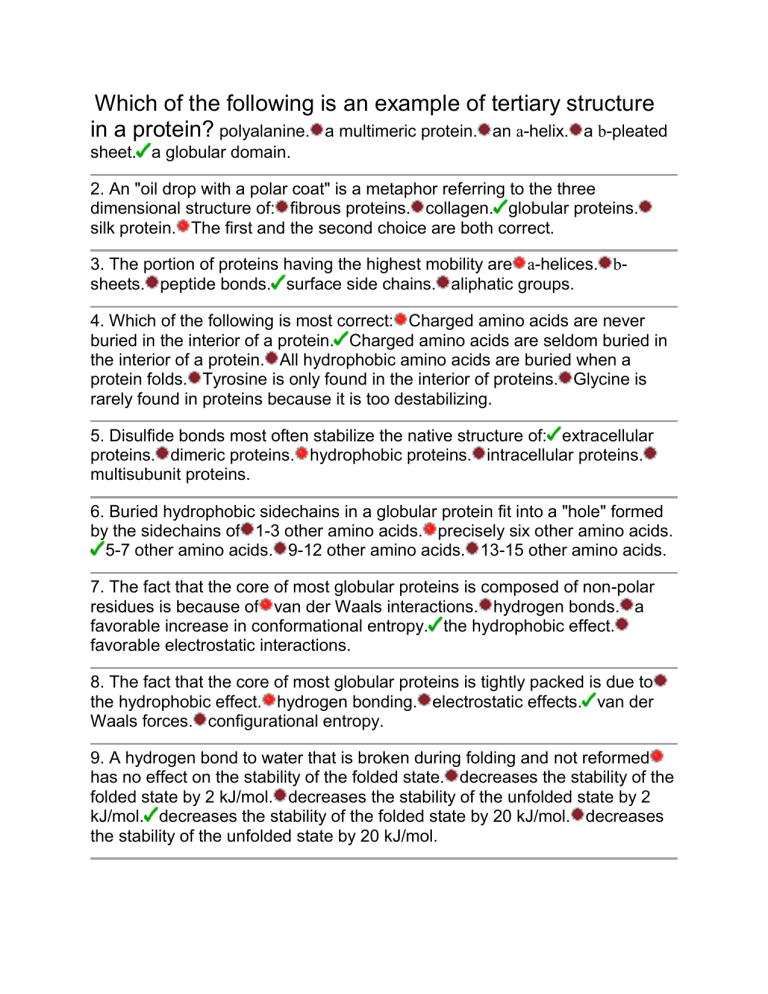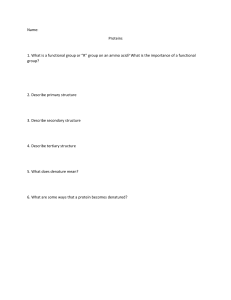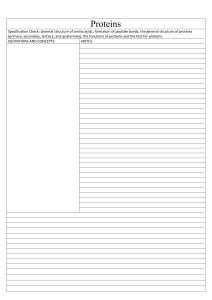
Which of the following is an example of tertiary structure in a protein? polyalanine. a multimeric protein. an a-helix. a b-pleated sheet. a globular domain. 2. An "oil drop with a polar coat" is a metaphor referring to the three dimensional structure of: fibrous proteins. collagen. globular proteins. silk protein. The first and the second choice are both correct. 3. The portion of proteins having the highest mobility are a-helices. bsheets. peptide bonds. surface side chains. aliphatic groups. 4. Which of the following is most correct: Charged amino acids are never buried in the interior of a protein. Charged amino acids are seldom buried in the interior of a protein. All hydrophobic amino acids are buried when a protein folds. Tyrosine is only found in the interior of proteins. Glycine is rarely found in proteins because it is too destabilizing. 5. Disulfide bonds most often stabilize the native structure of: extracellular proteins. dimeric proteins. hydrophobic proteins. intracellular proteins. multisubunit proteins. 6. Buried hydrophobic sidechains in a globular protein fit into a "hole" formed by the sidechains of 1-3 other amino acids. precisely six other amino acids. 5-7 other amino acids. 9-12 other amino acids. 13-15 other amino acids. 7. The fact that the core of most globular proteins is composed of non-polar residues is because of van der Waals interactions. hydrogen bonds. a favorable increase in conformational entropy. the hydrophobic effect. favorable electrostatic interactions. 8. The fact that the core of most globular proteins is tightly packed is due to the hydrophobic effect. hydrogen bonding. electrostatic effects. van der Waals forces. configurational entropy. 9. A hydrogen bond to water that is broken during folding and not reformed has no effect on the stability of the folded state. decreases the stability of the folded state by 2 kJ/mol. decreases the stability of the unfolded state by 2 kJ/mol. decreases the stability of the folded state by 20 kJ/mol. decreases the stability of the unfolded state by 20 kJ/mol.





